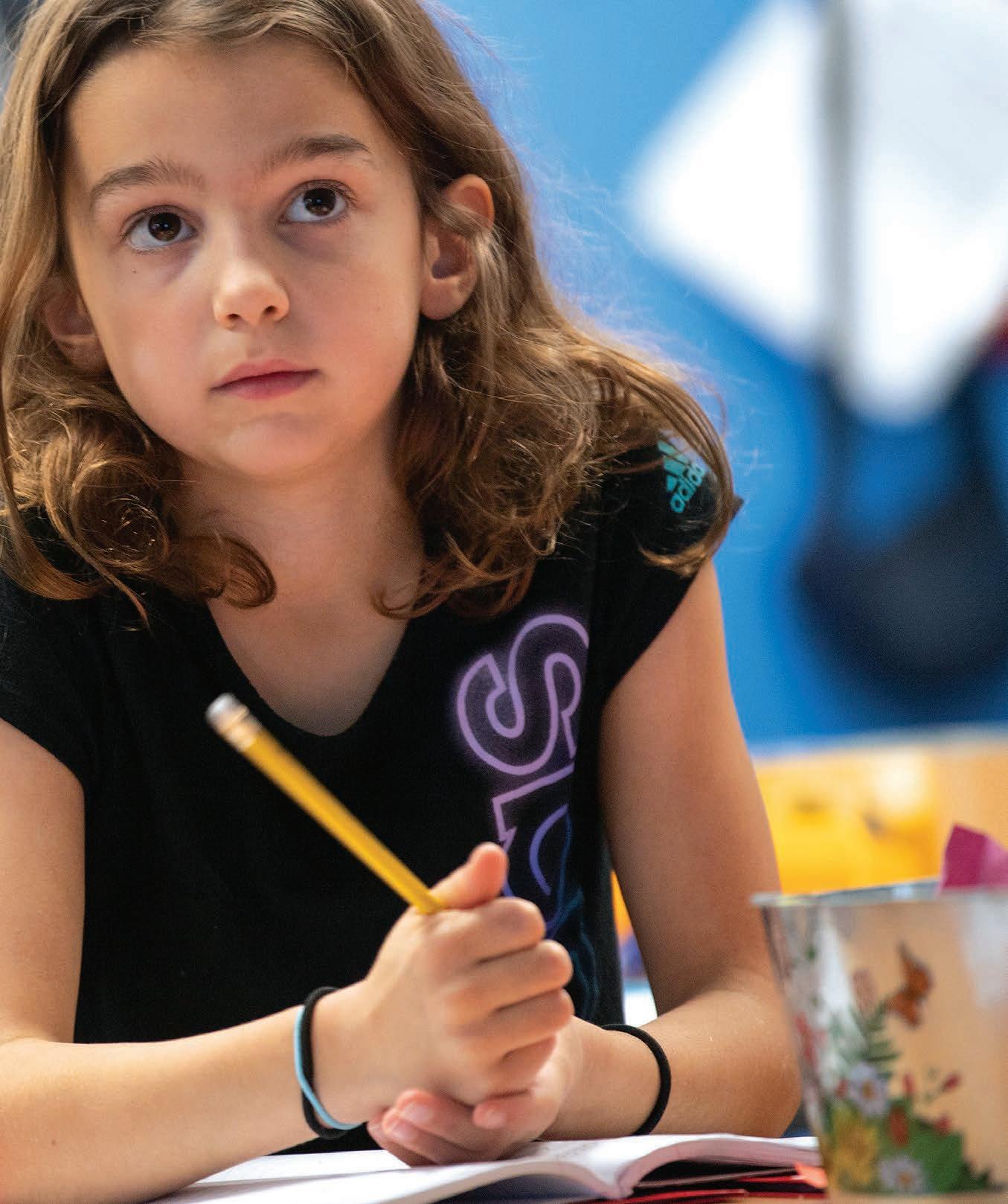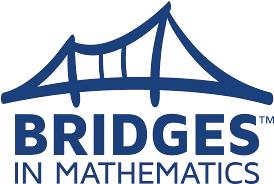
5 minute read
In the Classroom: Bridging the Gaps with an Exciting New Math Program
Introducing Bridges in Mathematics
Norwood has a long history of continually reviewing and reevaluating every aspect of its curricula, typically on a rotating basis. After completing a review of the social studies curriculum in 2017, the School shifted its focus to the math program—particularly in grades K-5 where the current program, “Go Math,” was up for renewal—to identify a best-fit curriculum for Norwood’s child-centered and differentiated approach to teaching and learning. >
What we love about Bridges: Student-centered and highly differentiated / Rigorous and engaging / Offers more ways to stretch students’ thinking / Focused on reasoning, logic, and multiple approaches to solving a problem / Linguistically, visually, and kinesthetically rich / Develops proficiency with key skills and deep thinking about mathematical concepts / Allows students to make connections with new material by overlapping Work Place units / Encourages exploration and questioning / Utilizes lots of visual models and manipulatives / Extensive assessment / Easily and smoothly transitions to the Glencoe program taught in grades 6-8


A GREAT NEXT STEP FOR NORWOOD
-Mike Risen, Interim Head of Lower School and Director of Curriculum and Instruction
A Math Text Review Task Force, led by math coordinators Fielding Winters in the Lower School and John Currie in the Middle School, spent a year researching programs, testing materials, and gathering feedback before unanimously landing on Bridges, a comprehensive, research-based K-5 curriculum. Fielding and John point out that Bridges is a natural fit for Norwood. Mike Risen, interim head of lower school and director of curriculum and instruction agrees. “Bridges and Norwood are pedagogically aligned,” says Mike. “The program is highly student-centered and allows for great differentiation. It feels a lot like our reading and writing workshops.”
Feedback from Norwood’s faculty who piloted the program last year was overwhelmingly positive. Teachers like the blend of direct instruction, structured investigation, and open exploration that provides multiple paths to stretch students’ thinking— no matter where they are or how they learn. They also praise the rigor of the program and its emphasis on development of strong number sense and deep thinking. “Bridges is a pedagogically and visually rich curriculum,” explains Fielding Winters. “Students are exposed to concepts using visual models at the youngest of grades, with these models becoming increasingly abstract as students progress through the grades. The program places an emphasis on seeing patterns, reasoning about mathematics, and problem solving. At every grade level, students are presented with problems that have multiple entry points and that honor different ways to approach a solution, but which ultimately help students discover the most efficient and effective strategies.” In addition, teachers are embracing the breadth of tools and scaffolding that support the curriculum. With a multisensory, hands-on approach, Bridges incorporates a variety of increasingly complex visual models, manipulatives, games, and activities— all of which are compelling and engaging to children. Learning is active and robust as students collaborate on problems, test conjectures, and move around the classroom. The program also provides many opportunities for students to talk about math, make observations, explain their thinking, and ask questions. These rich math explorations take place during what Bridges refers to as “Work Places” and “Number Corners” (see sidebar).
The structure of the program provides the time for extensive individual assessment and differentiation. While students engage in Work
-John Currie, Middle School Math Coordinator
Place activities, teachers are able to move around the room, observing, challenging, and conferring with individual students and small groups. Further, every unit begins with a preassessment, includes a mid-unit check, and finishes with a post-assessment for each student. And throughout each unit, teachers have a clear idea of which skills or concepts are being reviewed, practiced, or extended to higher levels.
John Currie, middle school math coordinator, is impressed with the strength of the program in terms of developing the deep conceptual knowledge and strong number sense that lays the foundation for algebra and geometry in grades 6-8. “Students work through rich, interactive, and openended problems, which helps them to understand the power of math and its many applications,” John explains. As units overlap, students have the ability to transfer their knowledge and apply it to new contexts. “The program takes them exactly where they need to be for when we shift over to the Glencoe program in sixth grade,” says John.
“Bridges is a great next step for Norwood’s math program,” says Mike Risen. “Not only are students building skills, they’re learning how to apply a variety of strategies to solve complex problems. They’re becoming critical thinkers and problem solvers.” Mike notes that Bridges is a complex and robust curriculum that is not easily implemented: “It requires skilled and talented teachers who inherently understand what this looks like in practice. We have those teachers. All around, this is an ideal fit for Norwood.”
Work Places: Choice, Collaboration, & Exploration
Several times a week, following a minilesson at the start of every class, students explore key skills and concepts at various “Work Places” set up around the classroom. Working individually or in pairs or small groups, students may choose from up to six Work Places—controlled choice that allows for student agency and selfdirected learning. Equally important, Work Places are a valuable time for authentic assessment as teachers move around the room, observing, questioning, and adding or removing scaffolding to make sure every student is challenged appropriately. In fact, one Bridges teacher describes it as an excellent time to “dipstick” for clarity and understanding. Work Place activities are thoughtfully designed and can reveal more about a student’s thinking and comprehension level than a written test.
Number Corner: Daily Math Workouts for Those Math Muscles
A Number Corner is an interactive bulletin board that revolves around the classroom calendar, providing skills practice and continual encounters with mathematical concepts. These short daily workouts are used to introduce, reinforce, and extend skills. Typically, students will participate in two to three Number Corner workouts per day as a warm-up before the main lesson of the day. “It’s almost like math is woven in throughout the day, as the visual of the Number Corner is always present for students to think about,” Fielding Winters notes. In addition, a Number Corner Student Workbook supports these workouts with independent practice and engagement with the skills and concepts covered in the daily workouts.





